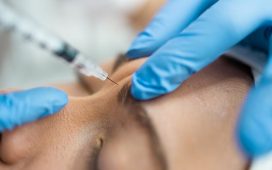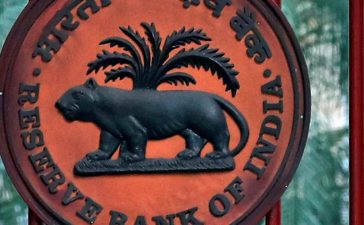Are you doing it all wrong? Last week, researchers in the US reported that holding your arm in the incorrect position when taking your blood pressure could substantially overestimate the reading.
As a result, many people could be being misdiagnosed with hypertension.
So what’s the right way? I’ll come to that.

Taking blood pressure is a low-tech medical measurement – but the results can be the difference between life or death
But first, you may wonder why, in this era of high-tech scanners and tests, we take this low-tech measure – wrapping a cuff around your arm and pumping it up tight – so seriously?
The fact is, it could be a matter of life or death. The first number in your reading, known as the systolic pressure, reflects the pressure in the blood vessels when your heart contracts – the maximum pressure. The second figure, the diastolic, is when the heart relaxes. A healthy reading is around 120/60mmHg.
When blood pressure is higher you might expect blood flow to be faster, as when turning on the garden hose. In fact it’s slower – this is because blood is a ‘liquid’ tissue, a fluid with tiny particles such as blood cells, and higher pressure tends to cause more sluggish flow.
High blood pressure is a sign of unhealthy arteries. Arteries have elastic walls and can expand or contract to change diameter. If they aren’t flexible, it increases the work of the heart pumping blood. The result? A weaker heart as the muscle becomes progressively damaged, leading to heart failure, blood clots, heart attack and stroke.
A reading over 140/90 used to be the cut-off point for diagnosing hypertension, but these days the thinking is the cut off should be lower: 120-130 systolic, 60-70 diastolic. My view is that, like body weight, blood pressure is something everyone over the age of 30 should check periodically, perhaps once monthly.
The great thing is that no fancy technology is needed to measure blood pressure. You can get a simple and accurate monitor – known as a sphygmomanometer – for around £20.
But as this latest study has confirmed, it must be used correctly.
Choose a device with a cuff for the upper arm – I’d avoid the ones that go around the wrist or a finger as the reading won’t be as accurate. The point is to record the pressure in a big blood vessel, which will be much the same as the pressure in the main artery, the aorta, as it leaves the heart. The brachial artery in the upper arm is about the diameter of a pencil and, in my view, is the only site to measure blood pressure.
The cuff is pumped up to compress the artery so it closes. The pressure then automatically reduces, and at the point the blood can just squirt through it makes a small sound that a microphone in the cuff detects. That is the systolic blood pressure. The diastolic is when, as the pressure from the cuff slowly reduces, the blood pulses through again with each heartbeat.
The cuffs supplied are a standard size, but if you have a large arm – whether you’re overweight or muscly – you’ll need to buy a larger one. Using a small cuff on a big arm makes it much more difficult to squeeze the artery shut, so the reading will be far higher than your true blood pressure, as what you’re getting is distorted by the extra work of the cuff.

Dr Scurr recommends a series of steps before taking your own blood pressure to ensure an accurate reading – including going to the toilet, as a full bladder can raise the result by up to 10 per cent
The best time to take your blood pressure is first thing in the morning, or last thing at night.
But whatever time you do it, refrain from too much coffee, smoking, alcohol, or any exercise – even just cycling home or walking up several flights of stairs – at least 20 to 30 minutes beforehand. These can all temporarily raise blood pressure (putting pressure on the entire cardiovascular system), producing a false reading. Also go to the loo and empty your bladder – if you’re busting to go, it can raise blood pressure by at least 10 per cent.
Then sit in a quiet space, uninterrupted, for five minutes.
Place your forearm on the arm of the chair or on a table, at about the height of your heart (this is down to physics of blood flow, but essentially makes it more accurate).
The bottom of the cuff – around the bare upper arm – should be a couple of finger breadths above your elbow crease – this ensures the microphone is over the brachial artery. The cuff should also be loose enough to allow a finger to slide between it and your arm. Then press the start button on the blood pressure monitor.
If the pressure seems high, much above 140/90, wait a few minutes and take it again.
If it remains high, take a couple of readings two or three times each week for several weeks, at different times of day, say on first waking, somewhere around the middle of the day, and bedtime.
The spread of readings is important, and taking an average will be useful – consistently high readings demand the attention of a GP as high blood pressure can cause damage silently, until it’s irreversible and dangerous.
This is why I urge my patients to get a blood pressure monitor, and use it. It is no less important than having a set of scales to keep an eye on your weight if you want to survive.









